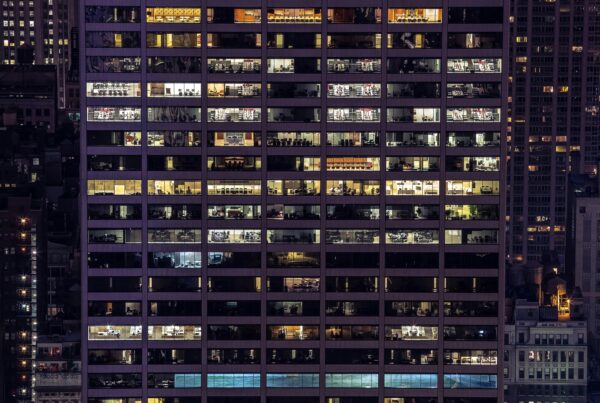This week the Grainger Lake Forest Data Center in Illinois achieved Gold certification in LEED v4 BD+C (Building Design + Construction). It’s the first ever facility to do so, particularly under the new Data Center sector of LEED v4 launched almost two years ago.
Sustainability of data centers is relevant now, especially in this age of Big Data. We’re generating and consuming more data than ever before—every second, every minute of the day—from photo uploads to video streaming to online purchases to app downloads to chats to blog posts to tweets to simple Facebook likes.
Mobile computing has played a big part in this deluge of data. No longer tethered to desktops, we’re now armed with our smartphones and tablets, which means instant access to the Web to create and share data.
Data centers are thus tasked with great volumes of information more than ever, dealing with data in unimaginable amounts called exabytes. And there’s even more data to come from the emerging array of smart gadgets: watches, TVs, fridges, cars, lightbulbs, thermostats, vacuum cleaners, etc., what with their sensors taking in all sorts of data from our bodies and environment. These huge amount of data exchanges are bound to continue and keep growing.
* * *
All that sophisticated and instantaneous data processing comes at an environmental price though. Data centers are particularly energy-intensive—air-conditioning is required to maintain an ideal temperature and humidity so that computer equipment will not overheat and malfunction. According to a 2006 report by the U.S. Environmental Protection Agency (EPA), data centers used 1.5{e3829ec1db02d54faaf9fa2de0d48db26af01d7a7944a63c3b26976124791cab} of the total electricity in the US, costing an estimated $4.5 billion. For massive data centers, electrical consumption can even rival that of a small town.
And that’s where LEED v4 comes in for data centers, especially with the emphasis on energy performance (which can garner for the project as much as 18 points).
* * *
That’s not to say that data centers have not been greening up in the past if it weren’t for LEED v4. Even before the USGBC included data centers in the picture, companies have aimed for LEED platinum certification for their facilities.
Apple leads the pack of green data centers with its 500,000 sq. ft. facility in Maiden, North Carolina, targeting a 100{e3829ec1db02d54faaf9fa2de0d48db26af01d7a7944a63c3b26976124791cab} reliance on renewable energy (it was 94{e3829ec1db02d54faaf9fa2de0d48db26af01d7a7944a63c3b26976124791cab} last April). Google, Facebook, eBay, Microsoft, and other tech giants are also greening up their data centers with advance cooling systems, equipment recycling efforts, solar and fuel cell installations, etc.
You don’t even have to be a tech giant to include sustainability in your bottomline. The University of Iowa Information Technology Facility, a 43,000 sq. ft. facility boasting of a 71{e3829ec1db02d54faaf9fa2de0d48db26af01d7a7944a63c3b26976124791cab} annual energy savings and earning all possible energy performance points just happened to achieve LEED Platinum certification back in 2012. Hopefully, as more data centers are created, big or small, sustainability will always be an important consideration.
Big data is not going away; instead it’s going to get far bigger and more complex as everyone chimes in on the global conversation. We had better have the greenest possible data centers for that.











